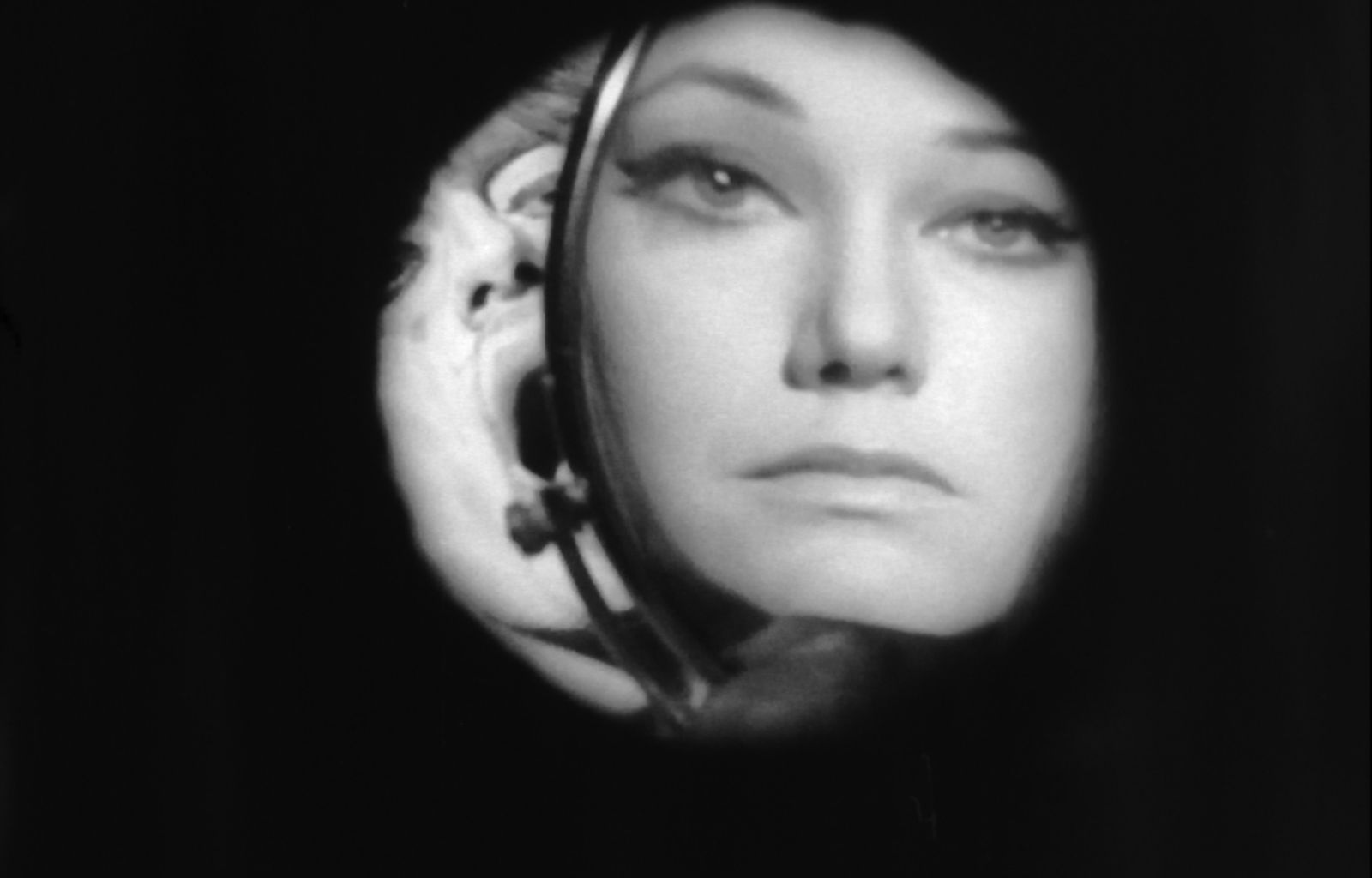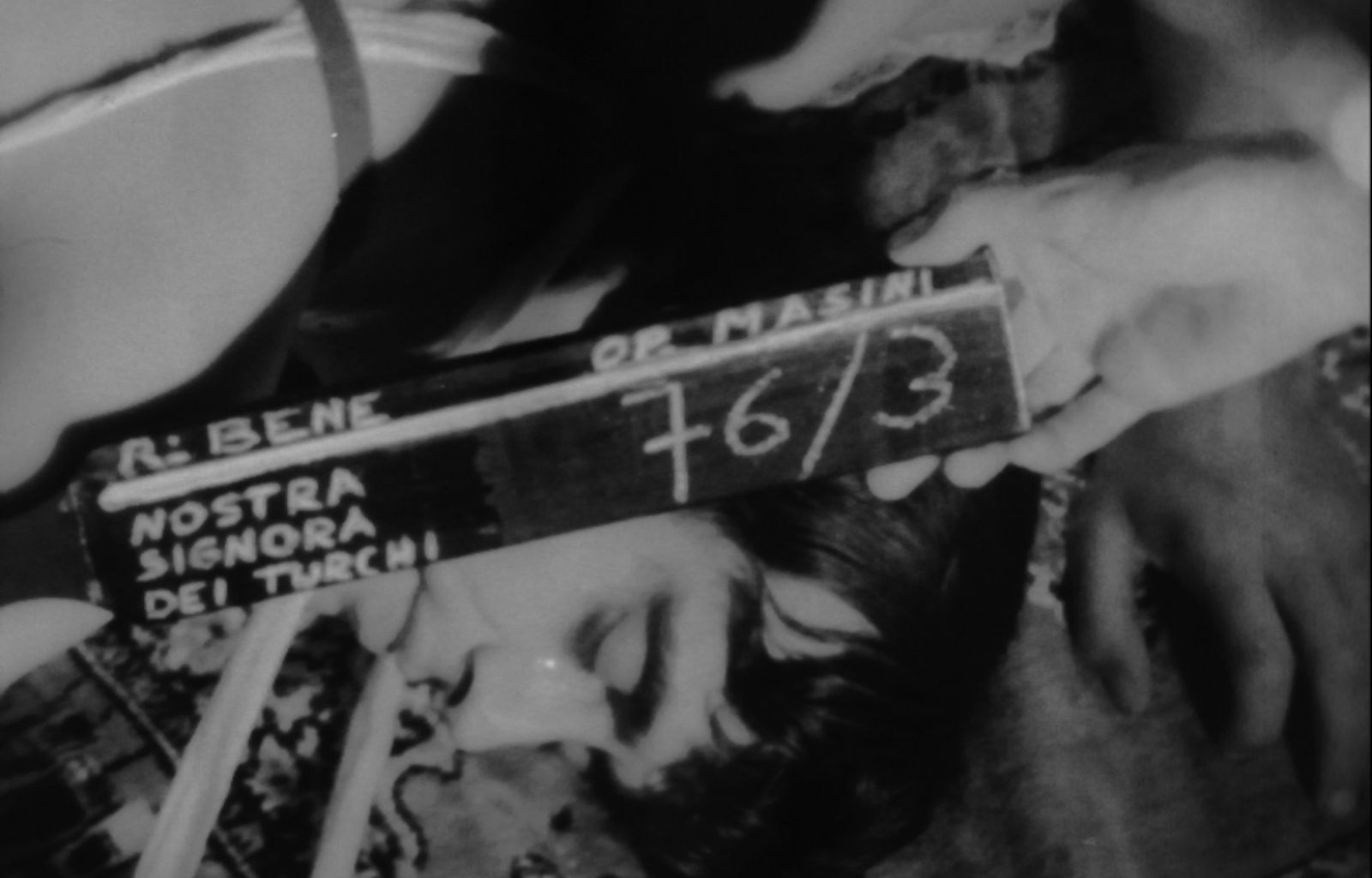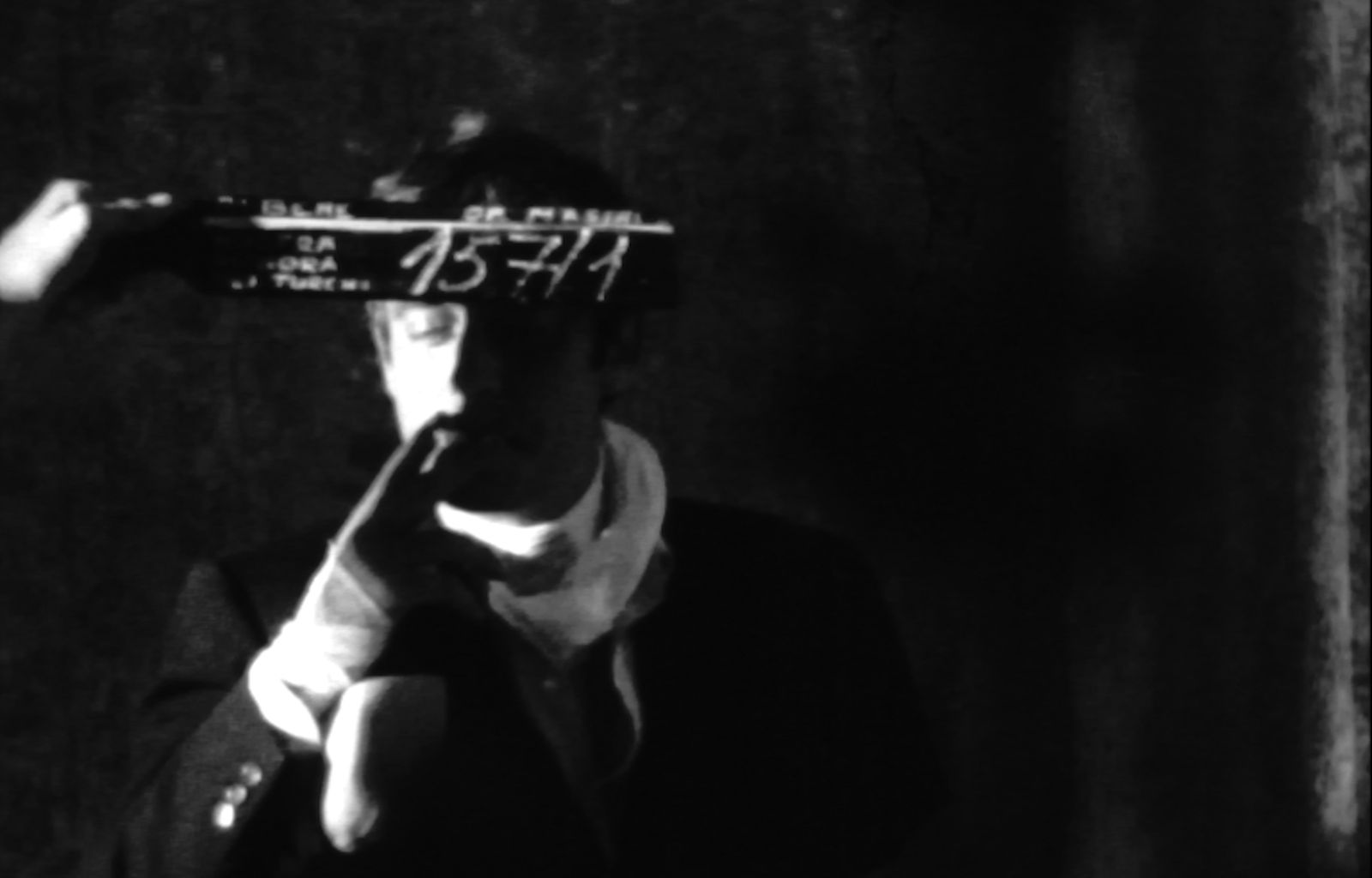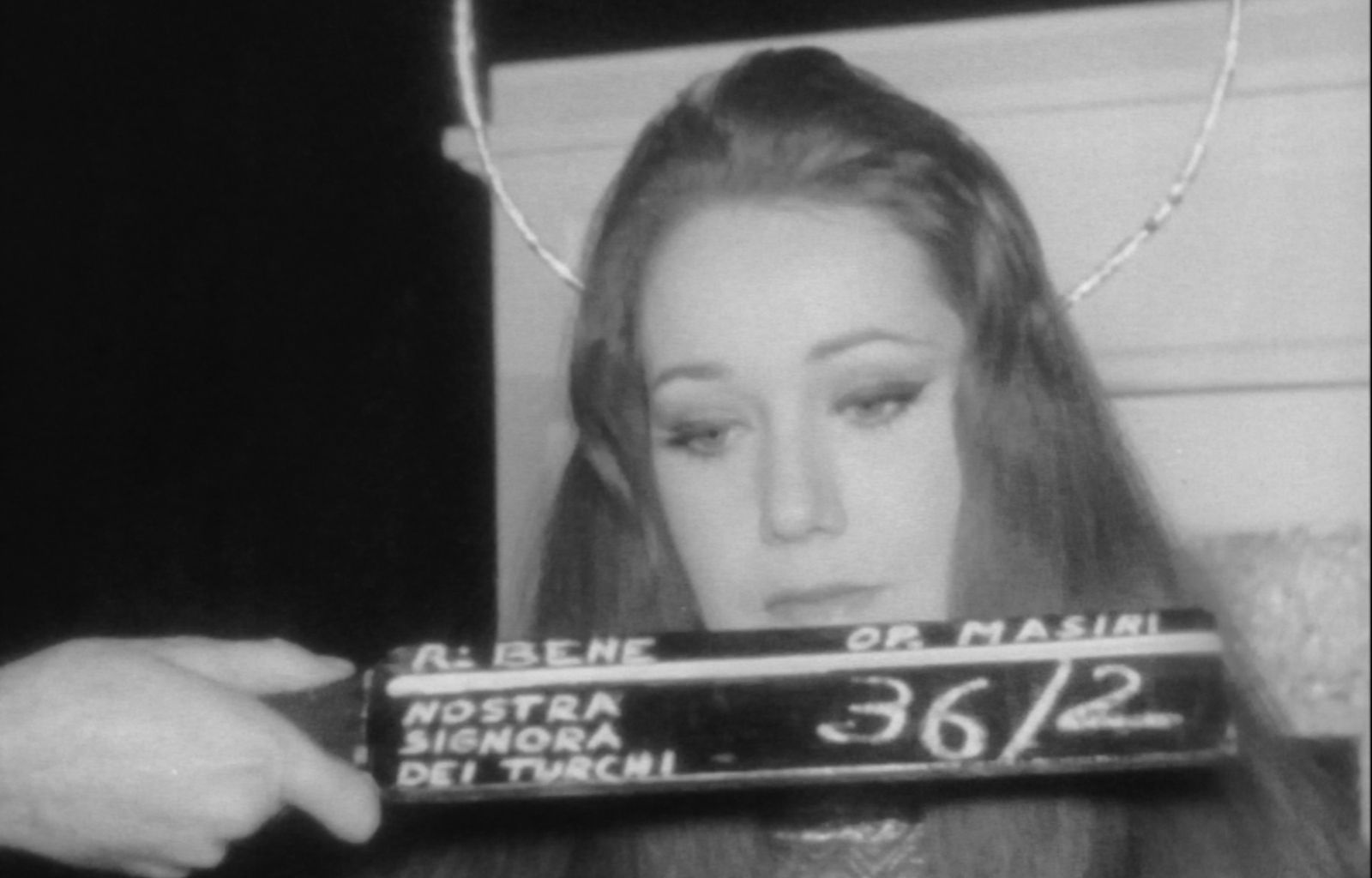Country: Italy
Year: 1968
Duration: 691'
Material to be destroyed. Rushes from Our Lady of the Turks
by fulvio baglivi
“I’m not a man, I’m dynamite.” Perhaps, in 1968, Bene would have accepted Nietzsche’s reflection as a critique of his debut film (considering Hermitage a sublime test challenge to cinema itself) and not the gossipy and judgmental critique from horrified columnists who squawked at a type of cinema that was alien to them and beyond their meager means. An idea of critique in the sense which he himself provided two years later in Don Giovanni and in the book L’orecchio mancante, “a gamble with the movie on the movie […] which was in itself self-criticized by the last author.”
The eleven and a half hours of exposed film of Our Lady of the Turks are not Our Lady of the Turks. They are in black and white, a dupe (a negative obtained from a positive) printed for post-production, leached of the kaleidoscopic colors of Ektachrome film; they are silent, without the stratifications of the soundtrack and that voice which retract everything. Of the film itself, not even a dim echo; to look at the rushes now, in the shadow of the visions which inevitably surface, they are like fragile, suspended, electric fragments, waiting for the iconoclastic fury of the editing – or more precisely, for Carmelo Bene’s dismantling – to set them loose, to give them that power which assails us at every apparition of Our Lady. What is missing is the constructive act, the making of a film, albeit unique and never viewed. And yet, the accumulation of images that will run parallel and peripheral to the Torino Film Festival all contain the destructive potential which Bene found both before and behind the movie camera.
It is hard to catalogue them, to subdivide them; it’s not a matter of what came out well or poorly, what worked or what didn’t; each sequence has a strength of its own and has something to offer to the labor of demolition. In fact, almost all the rushes are partially or entirely in the film and there are very few identical, repeated takes. Without basing himself on a method or a school, only on the experience and the imagination of Mario Masini for support, Carmelo Bene did not choose – in that legendary and fateful year, 1968 – to make cinema; rather, he chose to make himself cinema, or better, to get rid of the cinema by practicing it. Everything burns, broadens, breaks, even the sky wobbles and Carmelo Bene’s body is launched à corps perdu into that South of saints suspended in a space of their own, timeless.
This is not a nouvelle vague, nor is it New American Cinema; there is no reflection on the history of cinema and its techniques; there are no encounters with nor protests by the “angry ones” who wonder how they can bend cinema to the changes and explain it to the masses. Between martyrs’ bones and revels in the piazzas, between saints and servants, from the heavens to hell, the omnipresent body of Carmelo Bene searches for its own impossible martyrdom and destroys itself even as it demolishes every cliché, every representation, in order to become the presence of an absence and its opposite. The rushes, which were found among Microstampa material on deposit at the National Film Library, are a document of this destructive process. Their gray silence and the expanded duration of the takes allow us a glimpse of it, they let us pause on Bene’s genius, something which is impossible to do before his films, which continue to stun and take away the breath of all those who approach them.
edited by Fulvio Baglivi, telecinema: Antonio Commentucci; post-production: Martina Cagianelli




